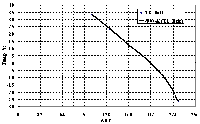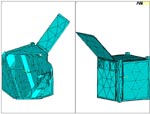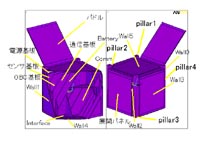




| Al6061 | PBTResin | Iron(SUS304) | SunCell | Li-ionBattery | |
|---|---|---|---|---|---|
| Heat conduction [W/m2] | 180 | 0.2326 | 499 | 962 | 886.07 |
| Specific heat [J/kg/K] | 896 | 2093.5 | 16 | 0.265 | 35 |
| Density [kg/m3] | 2700 | 1310 | 7920 | 1811 | 2746.5 |
|
Wall0 |
Wall1 | Wall2 | Wall3 | Wall4 | Wall5 |
|---|---|---|---|---|---|
| -30.8 | 180 | 0.2326 | 499 | 962 | 886.07 |
| DJC1 | DJC4 | CommBox | Battery | CommBoard | OBCBoard |
| -20.3 | -21.6 | -23.6 | -20.4 | -24 | -11.4 |
| SensorBoard1 | SensorBoard2 | PowerBoard | DCDCConvertor | InterfaceBoard | UnderPaddle(Wall6) |
| -16.7 | -26.2 | -13.1 | -9.7 | -21.4 | -80.5 |
| UnderWall5(外) | Pillow1 | Pillow2 | Pillow3 | Pillow4 | |
| -52.7 |
-25.8 |
-51.6 |
-45.2 | -44.7 |
 |
Copyright(C)
2003 All rights reserved. Tokyo Institute of Technology Lab. for Space Systems (LSS) TITECH CUBESAT PROJECT TEAM Contact : Nobumasa YAMAGUCHI |